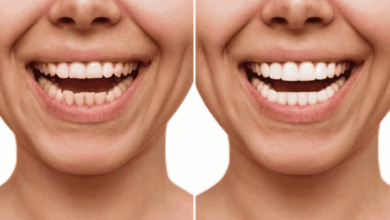The Role of Cosmetic Dentistry in Restoring Lost Teeth Function

Cosmetic dentistry enhances the aesthetics and functionality of teeth. Although it often focuses on appearances, it helps address functional issues like bite alignment and chewing efficiency. This dual purpose serves the aesthetic and operational needs of patients who have experienced damage or loss of tooth function over time. By improving both the look and performance of teeth, cosmetic dentistry provides a comprehensive approach to oral health. By addressing appearance and functionality, it helps individuals regain confidence and improve their overall quality of life.
Impact of Lost Teeth
Loss of teeth function can result from a variety of causes. Dental decay is one of the primary culprits, often advancing to the point where teeth become too damaged to perform their natural function. Trauma, such as accidents or sports injuries, poses another common cause, leading to chips, fractures, or even missing teeth. Aging also plays a significant role as teeth wear down, and gum health may deteriorate, impacting their structural integrity.
Cosmetic Dentistry Techniques
Cosmetic dentistry uses various methods to restore the functionality of damaged or missing teeth.
- Dental Implants- Dental implants are an effective solution for replacing missing teeth. Made from titanium, they provide a stable foundation for prosthetic teeth.
- Dental Bridges and Crowns- Bridges “bridge” the gap created by missing teeth, while crowns support weakened or damaged teeth. Both solutions improve chewing and speaking capabilities while maintaining dental structure.
- Dentures—Available in full or partial forms, dentures are another viable solution for restoring lost teeth’ function on a broader scale. Advancements in dentistry make sure dentures fit seamlessly, offering improved comfort and functionality for daily use.
Benefits of Early Intervention
Addressing dental issues promptly is key to preserving overall oral health and function. Losing even a single tooth can lead to misalignment, strain other teeth, and cause jaw pain over time. Seeking early professional advice allows dentists to create personalized treatment plans tailored to the patient’s specific needs, resulting in optimal functional and aesthetic results.
Role of Patient Education
Patient awareness plays an instrumental role in the success of cosmetic dentistry treatments. Educating patients about post-procedural care, such as maintaining proper oral hygiene and regular dental checkups, making sure restored teeth remain functional for years. Additionally, informed patients are better equipped to decide treatment options and adhere to prescribed care routines.
Professional Insights
Dental professionals often highlight the benefits of collaborative treatment plans in dentistry. By combining advanced procedures, patients can address both aesthetic and functional aspects of their teeth. Testimonials from those who have undergone such treatments emphasize the noticeable improvement in oral functionality, reiterating the integral role dentists play in advising and providing quality care.
Moving Forward
Cosmetic dentistry continues to bridge the gap between aesthetic goals and functional needs. It provides solutions for those affected by lost teeth. If you are thinking about options to restore dental function, consult a professional who can develop a tailored treatment plan to achieve effective and lasting results. With advancements in techniques and technology, modern cosmetic dentistry offers more accessible and reliable solutions.




